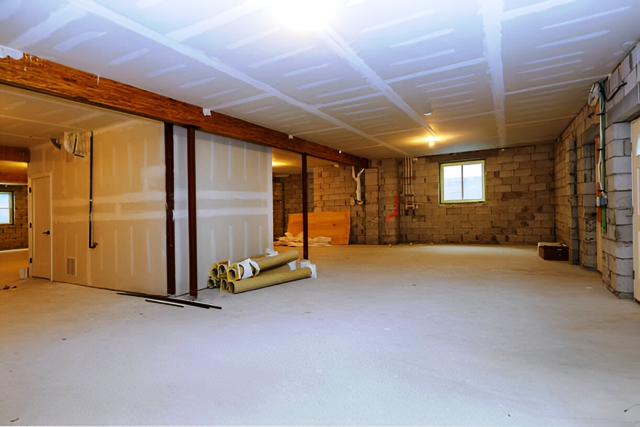
Latest ideas in basement remodeling help to turn a unused space to a beautiful part of the house. Regardless whether you dream of having a family room, a cinema hall or a guest chamber, it is necessary to think twice to achieve everything you want having your basement remodel. In this guide, you will find useful information regarding aspects that are needed for a successful basement remodeling process.
1. Assess Your Space and Set Goals
Evaluate the Current Condition:
Look for any signs of damp or worm or about any systematic decay. Consult with your health personnel to solve these issues before commencing the remodel to avoid worsening of their symptoms.
Define Your Purpose:
Next, determine the usage of the space you want to allocate for the PEO. For example, a usual choice is a home office, a gym, a guest bedroom, an entertainment room, or another living space.
2. Create a Budget
Determine Your Budget:
Think about your economic potential on the repair. Internal costs: costs for paints, other materials, worker wages, any necessary permits, and other miscellaneous costs.
3. Design the Layout
Measure the Space:
Measure the rate of inclination of the basement floor by polling and get the height of the basement at particular point from the ceiling, it is also important to locate particular obstacles like supports or utility connections on the floor. .
Plan the Layout:
Draw a floor plan with respect to the walls of the structure, doors, windows and utilities to be incorporated in the structure. Wet and dry areas as well as practical utilizations of the space sure need to be considered.
Consult a Professional:
If your design is inappropriate, you should consult an architect or designer for assistance in organizing the layout and also to guarantee that you’re qualms with the layout meet requirements.
4. Address Moisture and Insulation
Waterproofing:
The concrete must also have a sump pump installed, the cracking present in the basement’s walls and floors must be sealed, and waterproof paint or a membrane must also be applied.
Insulate Properly:
Ensure you fill your walls, floors and ceilings with the right insulating materials to allow a comfortable glowing room saving on energy bills.
5. Plan for Utilities
Electrical:
Determine where receptacles and light switches are to be located as well as any special specifications to consider such as for surround sound wires.
Plumbing:
If your remodel involves a bathroom or wet bar area of the home, position the needed pipes. Depending on the bathtub type, it may be advisable to engage the services of a plumber in order to install it in the right way.
6. Choose Materials and Finishes
Flooring:
Choose materials that will not be adversely affected by water by opting for materials like vinyl, tiles, or engineered wood.
Walls and Ceilings:
Select the right wall finishing such as drywalls which can easily handle the conditions in the basement. They pointed out that one could use drop ceilings in case one needs access to some utilities.
Lighting:
Minimally, ambient, task and accent which will help to make the space filled with comfortable and abundant lighting.
Fixtures and Furniture:
Choosing the right lamps, lights, and furniture should reflect the stylistics that you would like to lead in the room but also meet all the practical requirements.
7. Obtain Necessary Permits
Check Local Regulations:
Regardless of the project type you choose, it is necessary to call your local building department and find out which permits are necessary for the remodeling process.
Submit Plans:
File all your plans for all your approvals and inspections for the project whenever they are required.
8. DIY or Contractor
Hiring Professionals:
If the job requires many workers or is particularly intricate in nature, then the contractors to hire should be experienced ones. Query for more than once and make sure to compare their work with others and ask them to provide more referrals.
DIY Projects:
If you do have those skills it might be advisable to do some of the work on your own, for instance painting, or laying of floors might also be done by you in order to save some costs on labor.
9. Manage the Project
Record costs, various approvals to conduct business, and contractual agreements of the contractors involved. Due to the nature of this kind of projects, it is important that you keep in touch with your contractors often to know the progress made.
10. Finishing Touches
Final Inspection:
Make sure all construction work done is to the standard of codes used in the building and pass final inspection if required.
Enjoy Your New Space:
After the completion of the process, you can delight in the changes that your finished basement has offered you and your home.
Remodeling a basement is a complex process that requires selecting a proper design, rational cost management, and proper implementation. Therefore, with these steps, you are able to create a space that is both functional, beautiful, and thus, improving the appearance of your home, as well as catering to the needs of your family.
